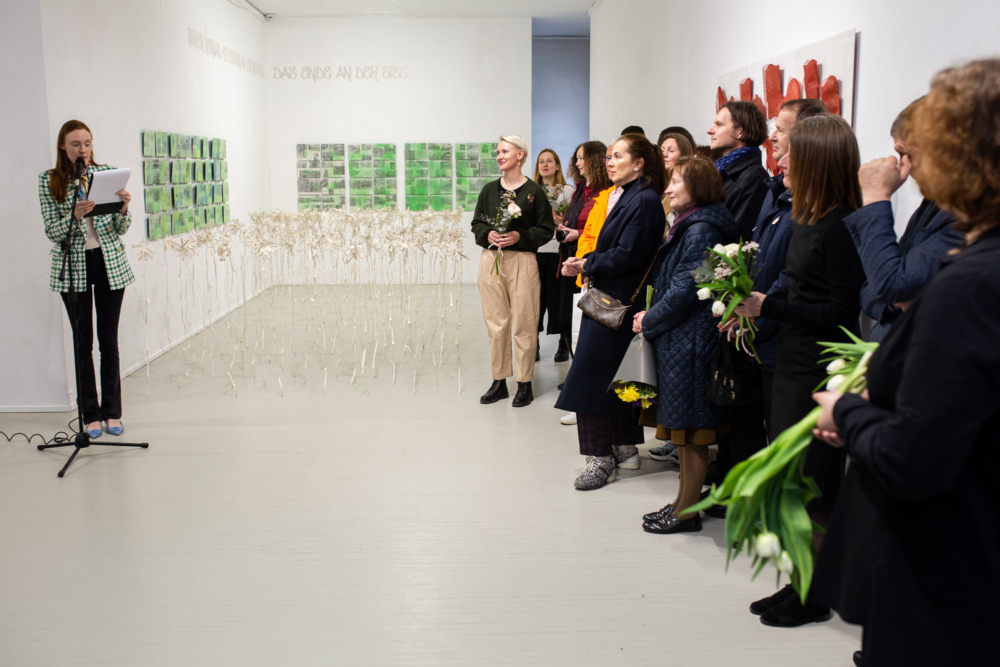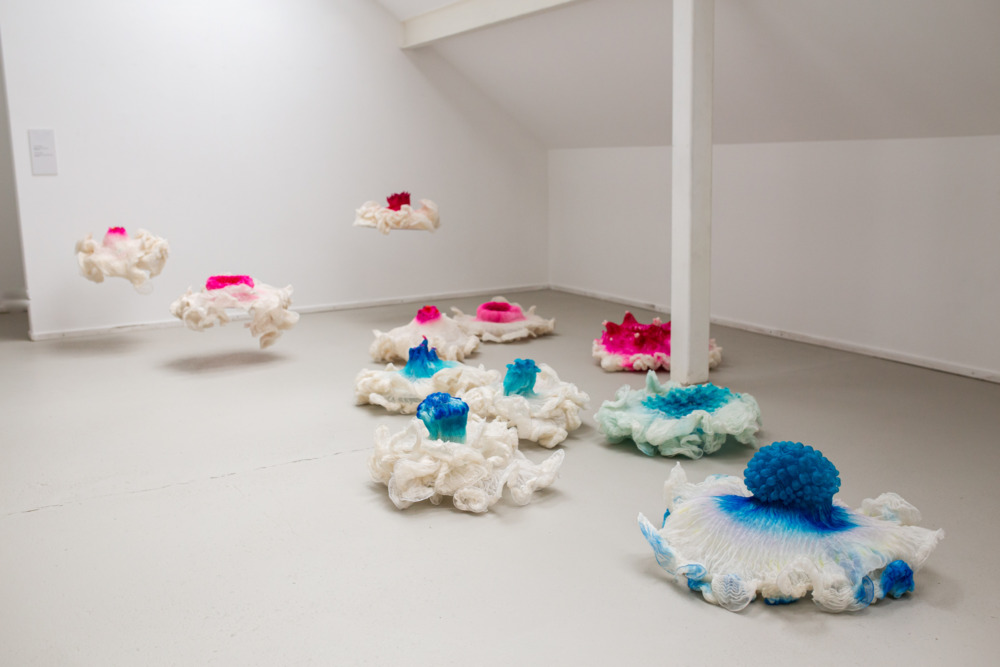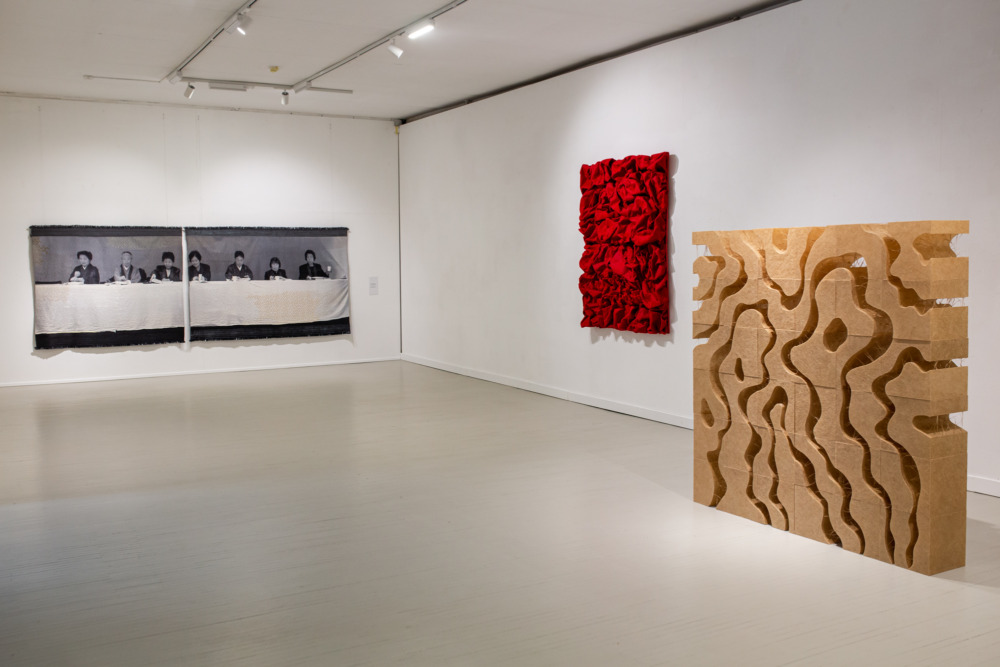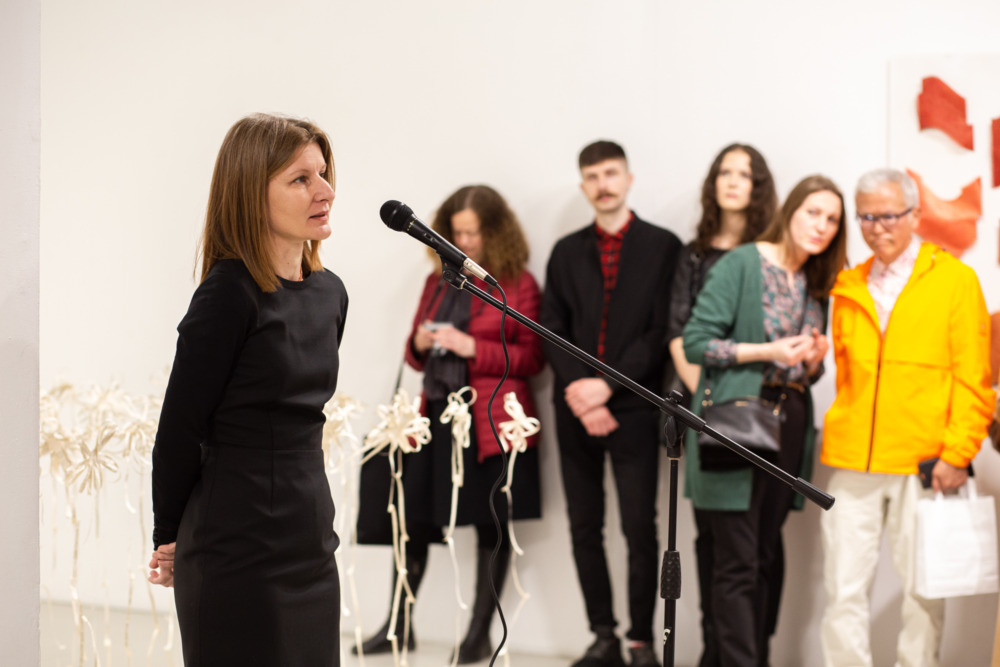Column
ColumnTextiles that take a look at life
When you take a good look at it, everything is a total, seamless textile. Especially in the context of a global pandemic and a terrible war, textile emerges as a sensitive expression of our material fragility. For some time, however, the focus in theory and art has been on the life of matter and the matter of life. The Anthropocene discourse that responds to environmental problems, the philosophy of the new materialism and other directions emphasize the sensitivity of being and its networked fabric, which is woven not only by a person who has mastered the technology, but also by other creatures of nature. Textile art responds to these trends by developing a distinctive textile philosophy that encompasses all the surfaces, fabrics, “leathers”, textures that surround us, and presents multiple conceptual and poetic metaphors. It is a specific philosophy expressed through in-depth cognition of fabrics, subtle craftsmanship and the practice of materials.

It is precisely this approach to textiles as a special field of artistic practice and thinking that connects modern creators for whom fiber art is the perfect medium for reflecting on the fabric of our being. That fabric is not dead, soulless matter. It is a living cloth, which receives vitality from the creator’s eyes, hands, body, as well as from the experiences, thoughts, memories, visions and intuitions expressed or simply embedded in it. Textile is a perfect mediator, weaving two planes – matter and the beginning of life, fabric and human subjectivity.
In the exhibition of contemporary textile art of Japan and Lithuania “Between Two / Contemplations”, held in Kaunas galleries, and in the catalog published on this occasion, we see fundamental differences between the two cultural traditions coming from the deepest antiquity. But the most amazing thing is that they are united by the common fundamental aspects.Understandably, textile as a cultural phenomenon has its own traditions in both countries, which can be also felt in the present work. However, due to the inherent intermediation of textile, it has a special communicative power that creates a lively intercultural dialogue that transcends the boundaries of space and time.
The title of the exhibition derived from the involvement of two curators in the conversation. Hiroko Watanabe, co-curator of the exhibition, a prominent textile artist and professor emeritus at Tama Art University, has insightfully noted that the exhibits are linked by contemplative vision. Textile is one of the forms of contemplation and meditation. It is a rhythmically organized activity, through which you can touch the world order, as if leaving yourself behind. One of the meanings of contemplation in Japanese is silent thinking (chinshi mokkō 沈思黙考), which is also synonymous with Zen Buddhist seated meditation zazen 座禅 . In addition, it is also 観照 kanshō – an experience through the eyes. In the Lithuanian context, contemplation is also associated with intimate reflection on reality. And one of its meanings is to take a good look at it. It is this motif of insight and experience that has become a unifying idea, encouraging us to see the textile features of life and to see what is embedded in the exhibits.

The works of Japanese artists are filled with natural forms approaching the supernatural. The works of Yasuko Iyanaga, Kyoko Kumai, Hitomi Nagai, Noriyo Ogawa, Naoe Okamoto, Michiko Sakuma and Naoko Serino reveal the primordial creative power of nature. The textile features of corals and plants, clouds and wind, the tissues of cells and microorganisms seem to breathe and move. Tangible substances, forms and shades are not only the shapes of “things”, but have the beginning of life, emerging into the realm of human existence and subjective experience. The works of Yuka Kuwai, Misao Tsubaki, Megumi Yanagishita, Hiroko Watanabe, Haruna Ishimori and Shigeo Kubota see the life of materials, forms and techniques themselves, which is devoted to the uninterrupted flow of time, influencing human experience and life.
The contemporary creative expression of Japanese artists, encompassing a variety of fibrous materials, techniques and forms of exhibition, is spreading through the deepest layers of archipelago culture, leading to a cord culture (Jōmon) and a natural Shinto worldview that perceives the world as an organic fabric, in which living and non-living organisms are intertwined and life is given by the powers of nature and invisible spiritual beings.
The work of Lithuanian artists is focused on the fabric of human and social reality, marveling at how the threads of everyday warp intertwine with the wefts of deeper reflections. That “cloth” of reality is, so to speak, both real and virtual, and its patterns receive life from “invisible beings.” Here, the past and the present intertwine as well as more general memories and personal experiences, authentic perceptions and intuitions. The ideas of the works of art themselves seem to be textile, and their concepts are beautifully bound.

Laima Oržekauskienė’s handmade tapestry builds a bridge between the two parts of the exhibition and the other between. It is like a virtual screen with a moment caught in Japan and captured in a photo. Textiles are an enigmatic media system that misleads in layers of reality. It is both modern and archaic, preserving something from the connection between the original textile and the ritual. In the work of Monika Žaltauskaitė-Grašienė, archaic female patterns emerge as a matrix or space technology, equivalent to the language of modern digital codes. Rasma Noreikytė reflects on our bodily and social fabric, requiring changes in our consciousness. Rūta Naujalytė reveals the destructiveness of multi-pattern fabric consumer culture. The strands of history and memory, collective and personal experiences twisted in Almira Weigel’s spatial installation turn into a landscape of indescribable meanings growing out of the remnants of World War II. In Lina Jonikė’s works, life seems to be woven on daily looms. Indrė Spitrytė cooperates with microorganisms to create organic fabric that adheres to a human being, sharing its life with them. Thus inviting to create a whole new reality.
One of the results accompanying the exhibition is the foundation for further cooperation. During the preparation of the exhibition, close cooperation was established with the Tama University of Fine Arts, especially with KAWAI Yuka, who introduced us remotely emerging textile artists (Aima Hanaoka, Fuuyo Okamoto and others, who could not participate in this exhibition due to the scope of the project). This led to thinking about a closer cooperation between Kaunas Faculty of Vilnius Academy Arts of and Tama Art University, involving more young textile artists in the space of cultural dialogue and the field of art. There was also an idea that turned into real plans to hold a tripartite exhibition, bringing together artists from Japan, Lithuania and Spain for a bigger textile art exhibition in Kaunas in 2023/2024. The Spanish curator María Ortega is interested in this project of the near future. In this way, the exhibition strengthens the cooperation and exchange between Japanese and European artists, looking for common themes that would help spread traditions and actualize them in the modern world.








